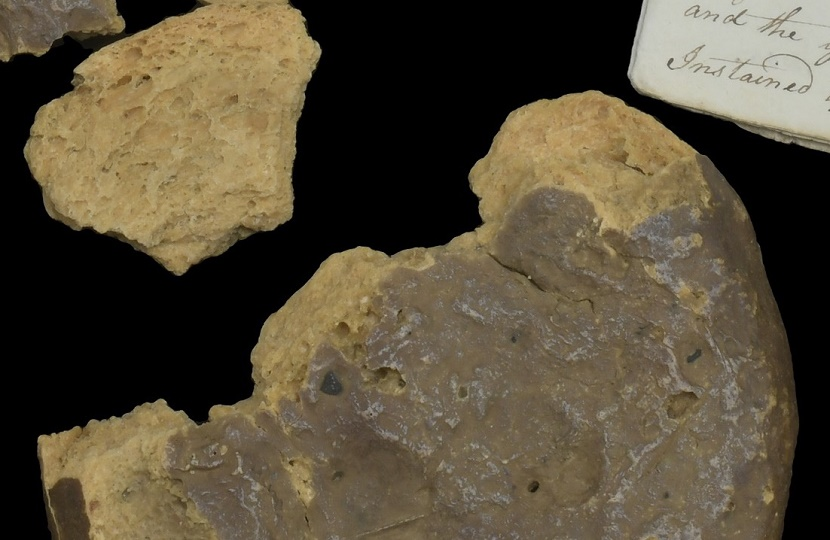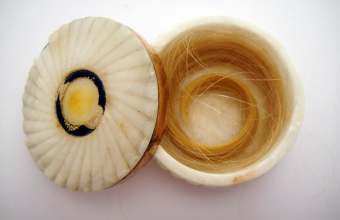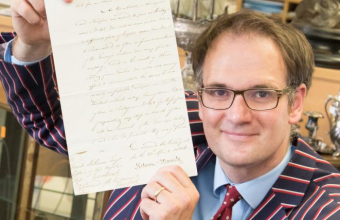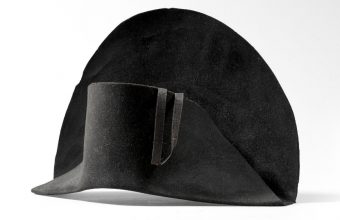A 200-year-old biscuit which survived the Battle of Trafalgar could fetch over $3,000 when it goes up for auction this month.
The ship’s biscuit originally belonged to Able Seaman Thomas Fletcher, who served aboard the H.M.S. Defence during the historic naval battle in 1805, at which Admiral Nelson’s fleet defeated the combined fleets of the French and Spanish navies.
The biscuit is part of a collection of memorabilia passed down through generations of Fletcher’s family, which also includes his Trafalgar medal, his shaving box, and a handwritten journal featuring his account of the battle.
Together, the collection is expected to sell for £2,000-2,600 ($2,750-3,500) when it goes under the hammer at Dix Noonan Webb in London on May 9-10.

Until now the world’s oldest ship’s biscuit was believed to date from 1852, and is currently on display at the Maritime Museum in Kronborg Castle, Elsinore, Denmark.
Although broken into several pieces, the Trafalgar biscuit has survived remarkably intact given it was made more than 215 years ago.
Known as ‘hardtack’, these biscuits were baked four times over and, if stored dry, could last for years. This made them an invaluable part of a sailor’s diet on long ocean voyages, although they were often considered barely edible.
According to the accounts of Jeffrey Raigersfield, a midshipman on the H.M.S Mediator, these ship’s biscuits were "…so light that when you tapped it upon the table, it fell almost into dust, and thereout numerous insects, called weevils, crawled; they were bitter to the taste, and a sure indication that the biscuit had lost its nutritious particles.
"If, instead of these weevils, large white maggots with black heads made their appearance, then the biscuit was considered to be only in its first state of decay; these maggots were fat and cold to the taste, but not bitter…"
These biscuits were often soaked in coffee, water or brine to soften them up, and were part of Navy rations until the mid-19th century, when canned foods such as preserved beef were officially introduced.
The Trafalgar biscuit may be the oldest in the world, but it still has a long way to go to become the most valuable.
That record was set back in October 2015, when a cracker which survived the sinking of the Titanic) as part of a lifeboat ration kit sold in the U.K for a remarkable £15,000 ($20,600).













